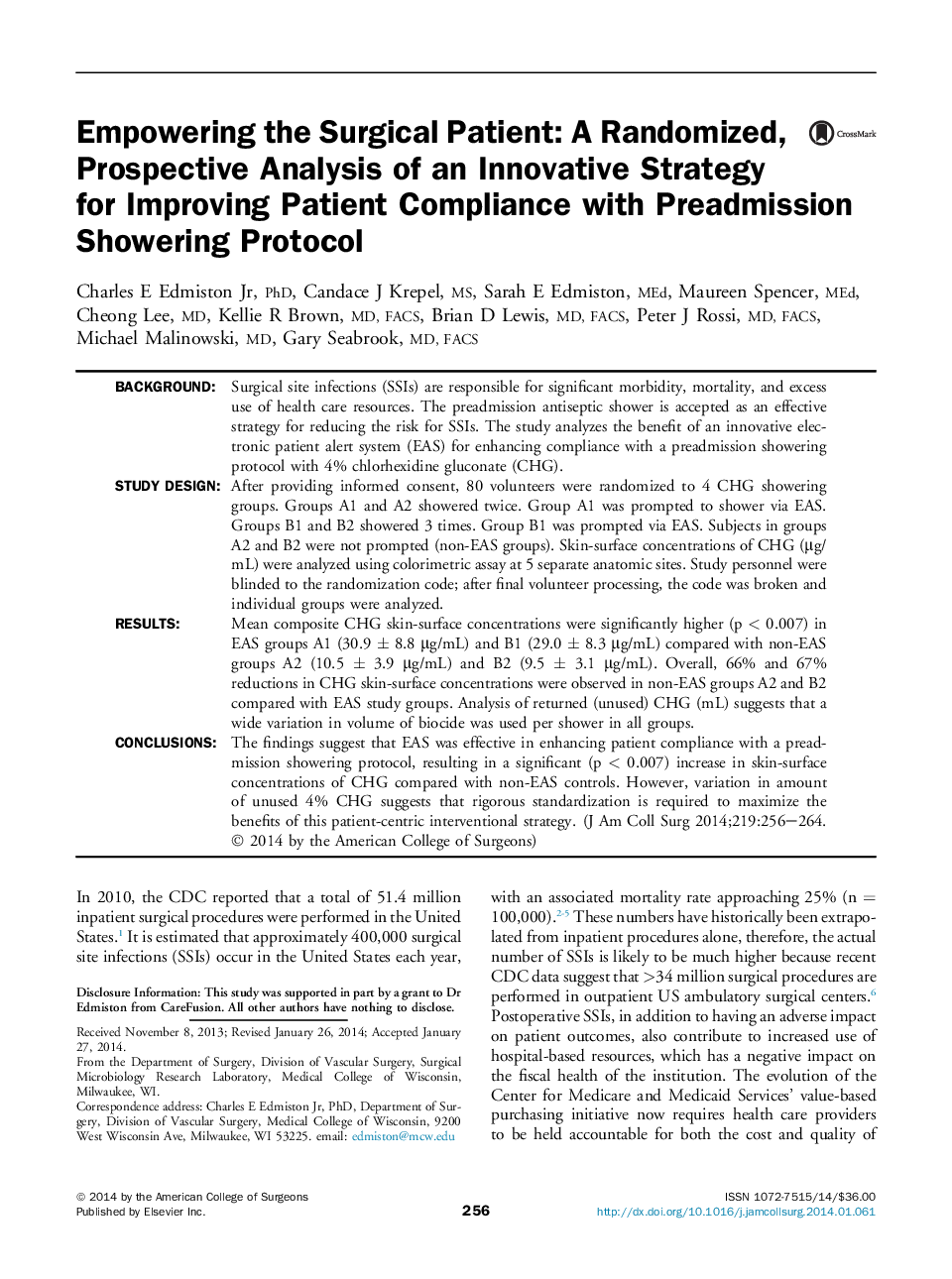| کد مقاله | کد نشریه | سال انتشار | مقاله انگلیسی | نسخه تمام متن |
|---|---|---|---|---|
| 4291411 | 1612231 | 2014 | 9 صفحه PDF | دانلود رایگان |
BackgroundSurgical site infections (SSIs) are responsible for significant morbidity, mortality, and excess use of health care resources. The preadmission antiseptic shower is accepted as an effective strategy for reducing the risk for SSIs. The study analyzes the benefit of an innovative electronic patient alert system (EAS) for enhancing compliance with a preadmission showering protocol with 4% chlorhexidine gluconate (CHG).Study DesignAfter providing informed consent, 80 volunteers were randomized to 4 CHG showering groups. Groups A1 and A2 showered twice. Group A1 was prompted to shower via EAS. Groups B1 and B2 showered 3 times. Group B1 was prompted via EAS. Subjects in groups A2 and B2 were not prompted (non-EAS groups). Skin-surface concentrations of CHG (μg/mL) were analyzed using colorimetric assay at 5 separate anatomic sites. Study personnel were blinded to the randomization code; after final volunteer processing, the code was broken and individual groups were analyzed.ResultsMean composite CHG skin-surface concentrations were significantly higher (p < 0.007) in EAS groups A1 (30.9 ± 8.8 μg/mL) and B1 (29.0 ± 8.3 μg/mL) compared with non-EAS groups A2 (10.5 ± 3.9 μg/mL) and B2 (9.5 ± 3.1 μg/mL). Overall, 66% and 67% reductions in CHG skin-surface concentrations were observed in non-EAS groups A2 and B2 compared with EAS study groups. Analysis of returned (unused) CHG (mL) suggests that a wide variation in volume of biocide was used per shower in all groups.ConclusionsThe findings suggest that EAS was effective in enhancing patient compliance with a preadmission showering protocol, resulting in a significant (p < 0.007) increase in skin-surface concentrations of CHG compared with non-EAS controls. However, variation in amount of unused 4% CHG suggests that rigorous standardization is required to maximize the benefits of this patient-centric interventional strategy.
Journal: Journal of the American College of Surgeons - Volume 219, Issue 2, August 2014, Pages 256–264
